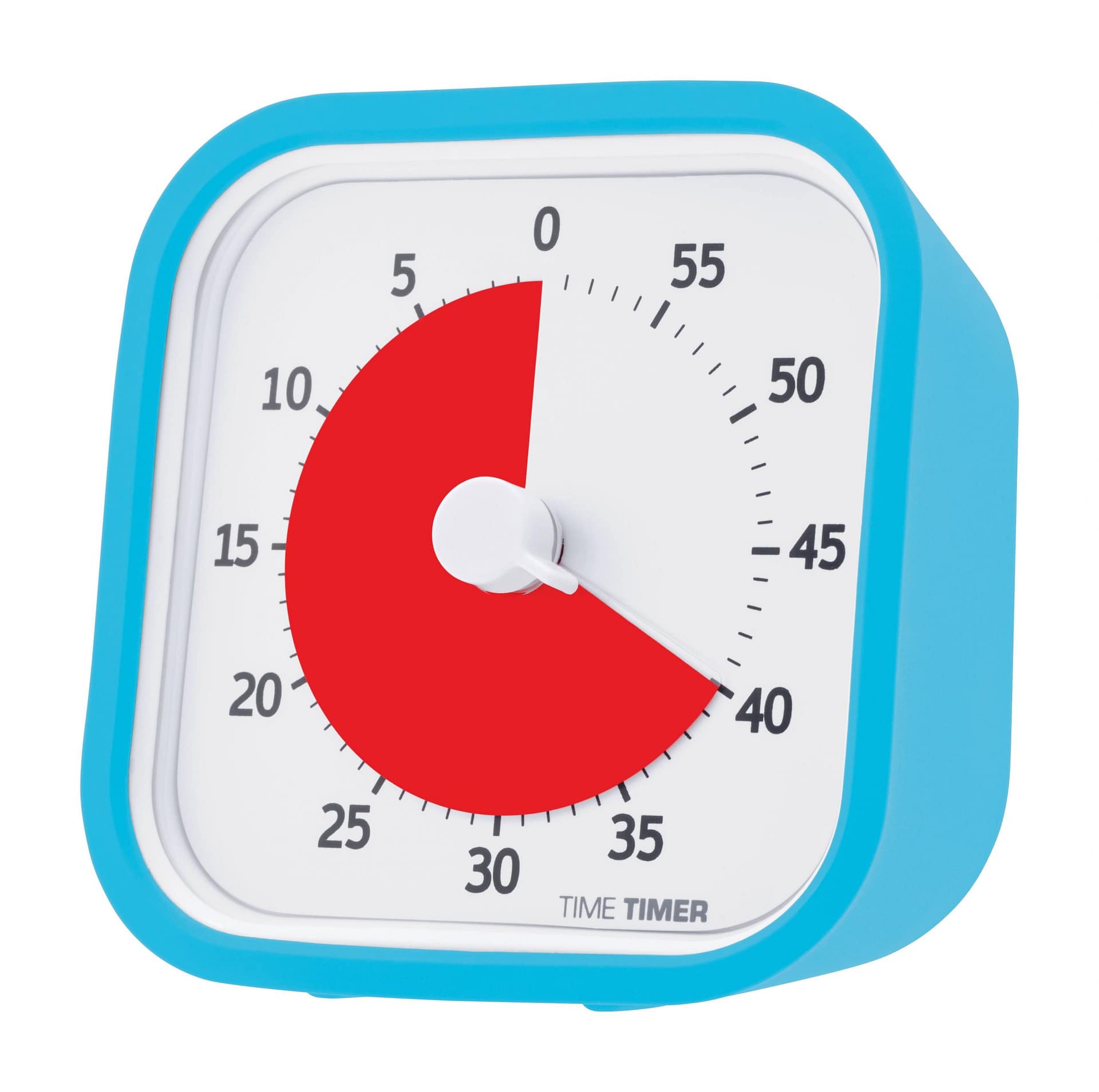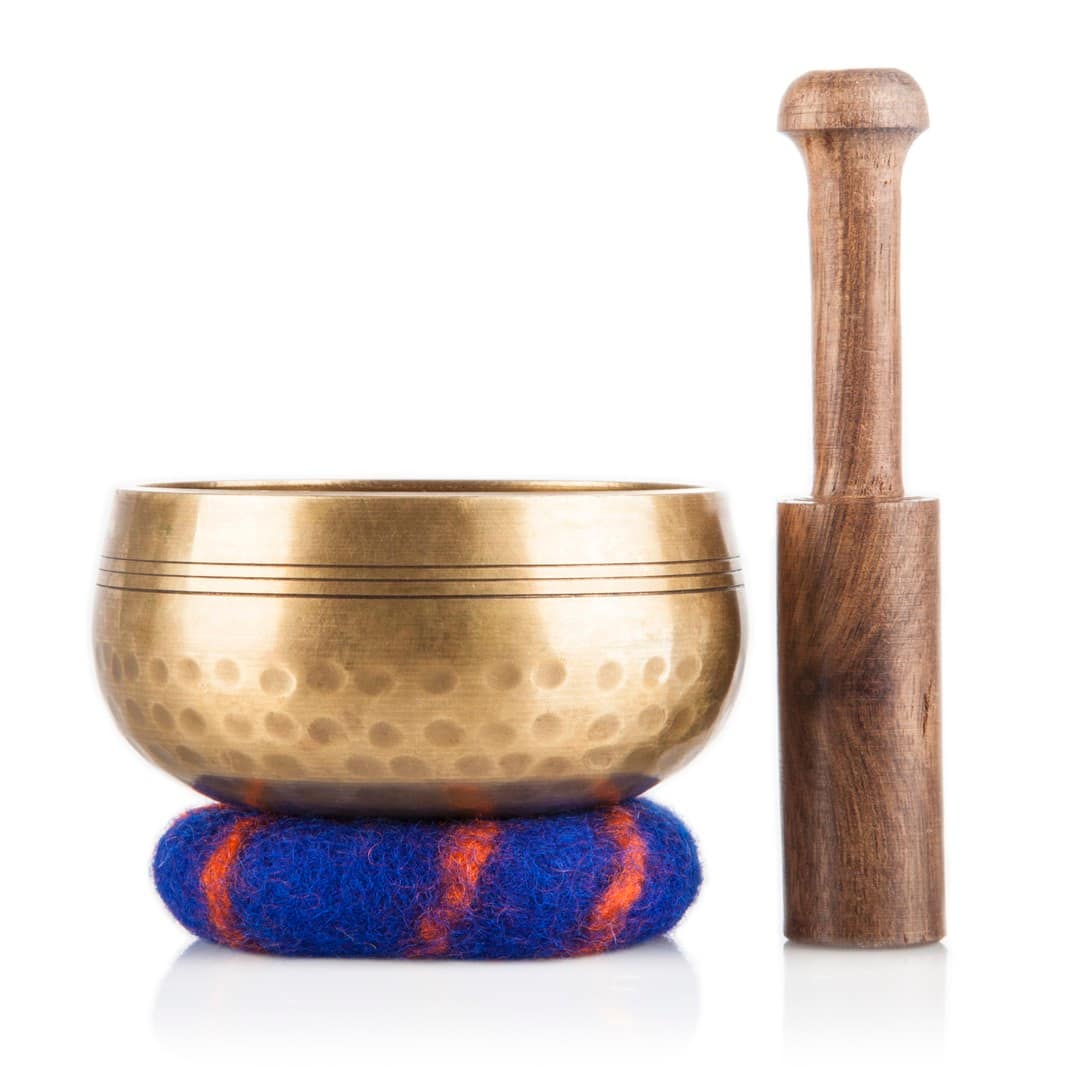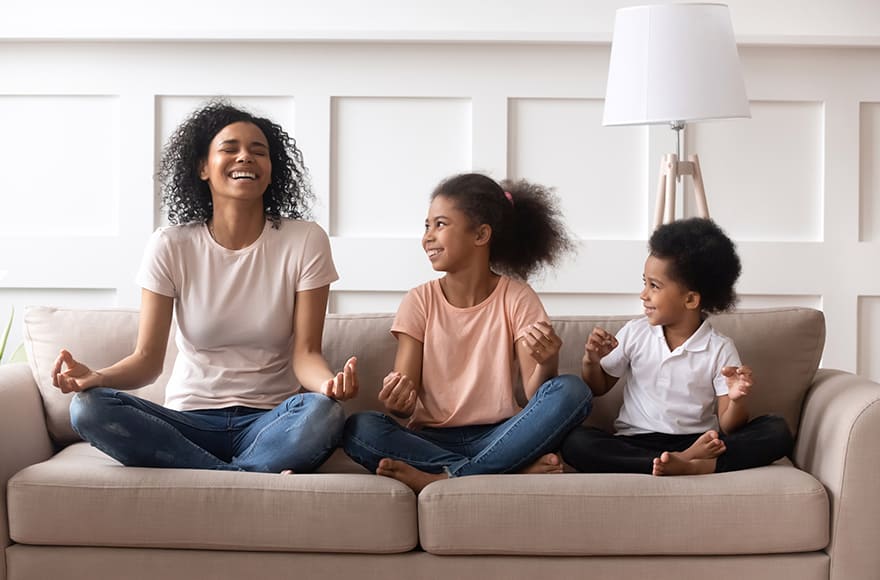Picture this: Your kid eats his cereal and accidentally tips over his juice. He quickly moves his notebook and Chromebook away from the spill. Then he has trouble logging into his math Zoom class. The baby cries for breakfast. The family dog paws at the door to go outside.
You listen to your work meeting through Bluetooth. And cut the baby’s pancake into bite-sized pieces. You try to log your child into his Zoom class. You open the door for the dog and realize the fence gate is open. You sprint across the yard to catch the dog. Meanwhile, everyone inside is yelling, “Mom! Help!” Your boss says, “Hey, are you there? What are your thoughts on the new proposal?”
Do you feel the anxiety rise as you read this?
Ok, ok. Maybe this is a slight dramatization. But, you get the point. Everyone is being pulled in many directions and wearing many different hats. Our work, school, meals, play, and sleep happen in the same space. We are constantly bombarded with technology because now we need it to function, connect, and do our jobs. The boundaries of separation are blurred and our brain is trying to cope with so much input. No wonder we are all feeling stressed. All. The. Time.
There’s a simple skill to get everyone calm, focused, and present – Mindfulness.
- How to get kids to be more mindful.
- My list of 6 mindfulness activities for kids.
- The benefits of mindfulness for kids.
- What does it mean to be mindful?
- Mindfulness timers and tools.
How to get kids to be more mindful.
Mindfulness for kids doesn’t have to be sitting quietly. Or breathing in and out while counting. Keep it light, fun, short, and simple. Here are some fun mindfulness activities for kids. These are best for school-age kids and up. Start with a minute or two of mindfulness at a time. Scroll down for mindfulness timers and tools that can help.
My list of 6 mindfulness activities for kids.
1. I SPY
Cut out and assemble pictures from magazines, books, and/or websites into a collage. Or you can find a picture of a busy scene. Start with a picture/collage that has a lot to look at. Set a timer for 1 minute and study the page. When the timer goes off, put away the image. Write down as many objects from the picture as you can remember. For younger kids, you can say them out loud instead. Try changing the picture and lengthening the time for older kids and/or for each new round.
2. FIVE SENSES WITH A SNACK
Start with a small snack in hand (cracker, fruit slice, cookie, etc.). Name each of the five senses. Silently describe what each sense notices about the snack. For example, with a string cheese: 1) sight – it’s white with clear wrapping; the top and bottom are shaped like circles. 2) sound – the clear wrapping crinkles as you pull it down. 3) touch – the cheese feels soft and squishy as you pull off a piece. 4) smell – there is a faint hint of creaminess. 5) taste – you put it into your mouth and its creamy flavor begins to melt on your tongue.
3. ABC GRATITUDE
This is like the idea of “I’m going on a picnic, and I’m bringing Apples, Bananas, Crackers, etc.” Instead, substitute “grateful for.” The first person says something he is grateful for that begins with A. The second person repeats the A, and adds on a B. The next person repeats the A and B, and adds on C, and so on. So, it would sound something like, “In this family we are grateful for Alex, Boats, Cloudy days, Dinosaur toys, etc.”
4. SOUND BALL
Everyone stands in a circle. You “throw” an imaginary sound to another person. He will “catch” your sound and “throw” a new sound to another person, and so on. Sounds should not be repeated after they are thrown and caught. So, person 1 says “splat” as they pretend to throw the “splat” to person 2. Person 2 says “splat” as they pretend to catch the sound. Person 2 throws out an “ugghhh” to person 3 who catches the “ugghhh.” Then person 3 throws out an “ooomph” to person 4 and so on. Set a timer and play for 2 minutes.
5. CLOUD WATCHING
This one works best outside. But indoors in a room with big windows could work too. Lay on the ground and get comfy. Or sit in a comfy chair near a big window. Scan the sky for shapes in the clouds. Take turns saying the shape you see, and wait for others to see the shape too. As an alternative, one person can suggest a shape to search for. Everyone must keep looking until someone can find that shape.
6. MAKING SANDWICHES
The idea is to imagine making your favorite sandwich. In your mind, say and imagine each step for making the sandwich. Imagine making 20 sandwiches. For example, for a pbj sandwich, first imagine taking out two slices of bread. Then visualize picking up your knife and scooping peanut butter onto your bread. Spread the peanut butter. Next, imagine putting your knife in the jar of jelly, scooping, and spreading it on the other slice of bread. Then put one slice of bread on top of the other, and put the sandwich in a ziploc bag. Visualize starting again with two new slices of bread. And so on.
The benefits of mindfulness for kids.
The benefits of mindfulness have been well-documented in research. In therapy, mindfulness is used as an intervention to treat ADHD, anxiety, and aggression. For kids and adults, practicing mindfulness can lead to better decision-making, more self-control, improved emotion regulation, improved social skills and communication. It also reduces stress and anxiety and improves attention.
What does it mean to be mindful?
Mindfulness involves two things:
- Focusing on one thing at a time.
- Being aware of the current moment.
Awareness of the moment means noticing thoughts and feelings without judging or trying to change them. When kids learn mindfulness, it helps them do this better. Mindfulness enables them to grow into healthier, more self-aware, and more compassionate adults.
Mindfulness timers and tools.
There are many timers and tools to make mindfulness easier. These two are my favorite:
My Recommendation

Time Timer MOD
60 Minute Visual Timer for Kids
Great for timing mindfulness activities. It’s simple, versatile, and can serve multiple functions in your house. I also use it to manage my work time.
Buy on Amazon
My Recommendation

Tibetan Singing Bowl Set
Meditation and Mindfulness Sound Bowl
In traditional mindfulness meditation, a singing bowl is used to signal the start and end of the practice. This one is a great size for kids.
Buy on Amazon
While we can’t change what we are called to do, we can change our approach to the situation. We can slow down and focus on just one thing at a time. For kids, practicing mindfulness is a great way to learn this. To keep them interested, try mindfulness activities that are short, simple, and fun.
You can always contact Dr. Jacque for more information. And be sure to sign up for more parenting tips and ideas like this.
